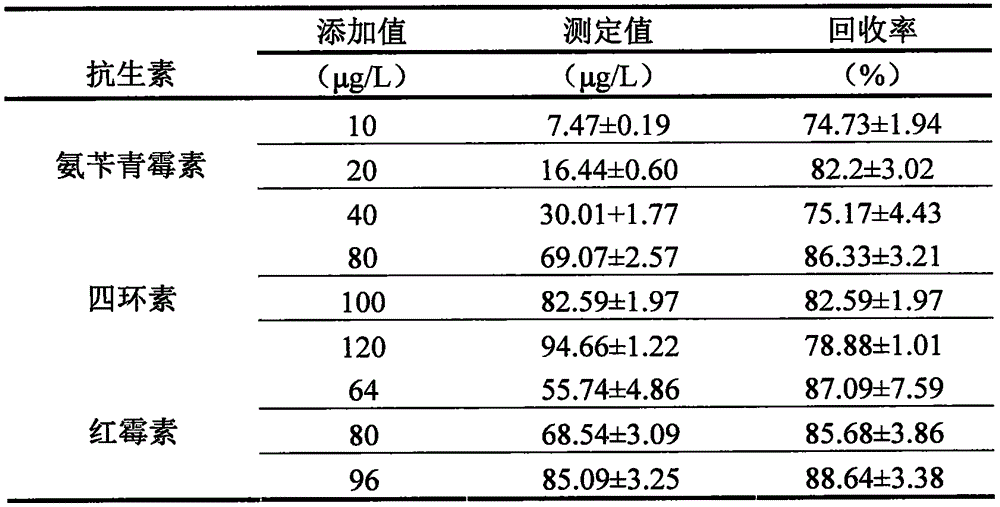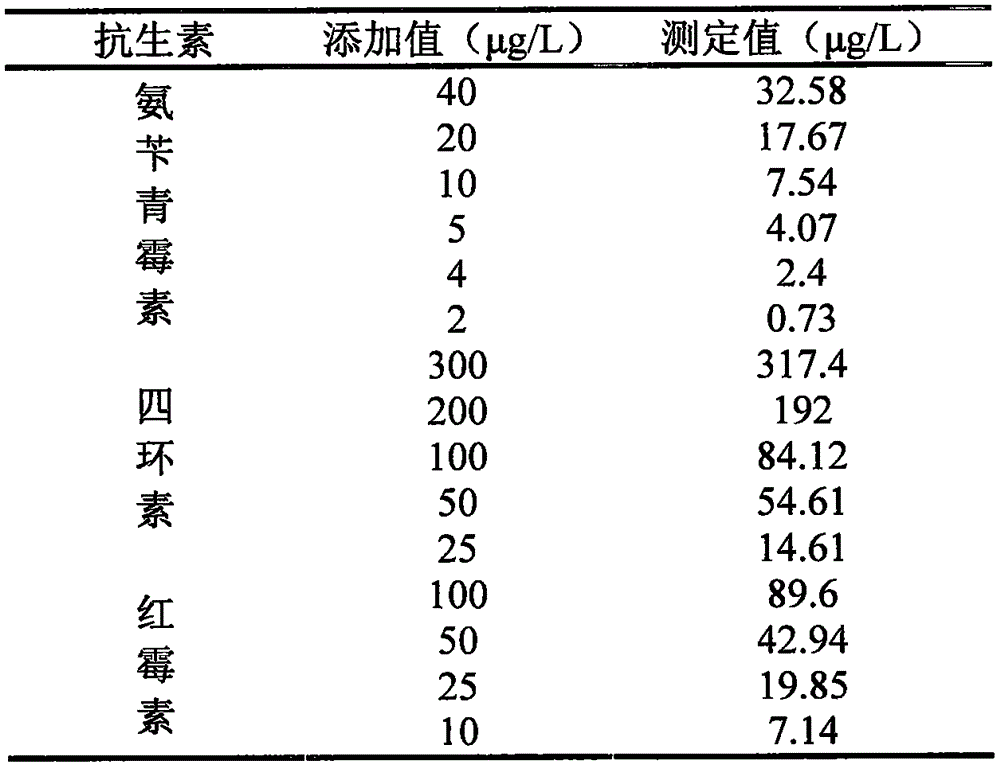Bifidobacterium breve and method for detecting various antibiotic residues in milk and application
A technology for the detection of Bifidobacterium breve, which is applied in the direction of microorganism-based methods, biochemical equipment and methods, and microorganism measurement/inspection. It can solve the problems of difficult detection of antibiotic residues, low sensitivity, and difficulty in simultaneous detection. Quantitative detection method is simple and easy, high sensitivity and precision, easy to store and operate
- Summary
- Abstract
- Description
- Claims
- Application Information
AI Technical Summary
Problems solved by technology
Method used
Image
Examples
Embodiment 1
[0039] The isolation and identification of embodiment 1 Bifidobacterium breve bacterial strain
[0040] Take the feces of healthy young men in Zhejiang Province as an isolated sample, 1g of feces is suspended and diluted with 10mL PBS, inoculated on TPY solid medium, and cultured anaerobically at 37°C for 48 hours to obtain Bifidobacterium breve DSQH-1 according to the present invention , identified as Bifidobacterium breve, was preserved on December 13, 2013 in the General Microbiology Center of China Committee for the Collection of Microbial Cultures (Address: No. 3, Yard 1, Beichen West Road, Chaoyang District, Beijing, Microbiology, Chinese Academy of Sciences Research Institute, Zip Code 100101), the deposit number is CGMCCNo.8579.
[0041] TPY agar medium and TPY liquid medium are products of Qingdao Hi-Tech Park Haibo Biotechnology Co., Ltd.
[0042] Bifidobacterium breve DSQH-1 strain of the present invention has the following microbiological characteristics:
[0043...
Embodiment 2
[0053] Example 2: Detection of antibiotic residues in milk samples
[0054] (1) Strain activation: inoculate the Bifidobacterium breve DSQH-1 strain on TPY solid medium, and culture at 37°C for 24-48h;
[0055] (2) Bacterial suspension preparation: Inoculate the Bifidobacterium breve DSQH-1 strain obtained in step (1) into TPY liquid, culture with shaking at 37°C and 200rpm for 4-5 hours, centrifuge at 3000rpm for 5 minutes, and adjust the bacterial solution with PBS The value of OD600 is 0.15-0.20, stored at 4°C;
[0056] (3) The obtained bacterial liquid was cultured anaerobically at 40°C for 12-16 hours; adjusted to zero with the culture medium, measured the OD600 of the negative control tube of the sample tube, and read the antibiotic concentration value (μg / L) from the standard curve.
[0057] (4) Preparation of screening medium: by weight, take peptone, 2.5g, yeast extract 3.0g, glucose 4.0g, soluble starch 1.0g, sodium chloride 1.0g, beef extract 1.0g, K 2 HPO 4 0.6g...
PUM
 Login to View More
Login to View More Abstract
Description
Claims
Application Information
 Login to View More
Login to View More - R&D
- Intellectual Property
- Life Sciences
- Materials
- Tech Scout
- Unparalleled Data Quality
- Higher Quality Content
- 60% Fewer Hallucinations
Browse by: Latest US Patents, China's latest patents, Technical Efficacy Thesaurus, Application Domain, Technology Topic, Popular Technical Reports.
© 2025 PatSnap. All rights reserved.Legal|Privacy policy|Modern Slavery Act Transparency Statement|Sitemap|About US| Contact US: help@patsnap.com



